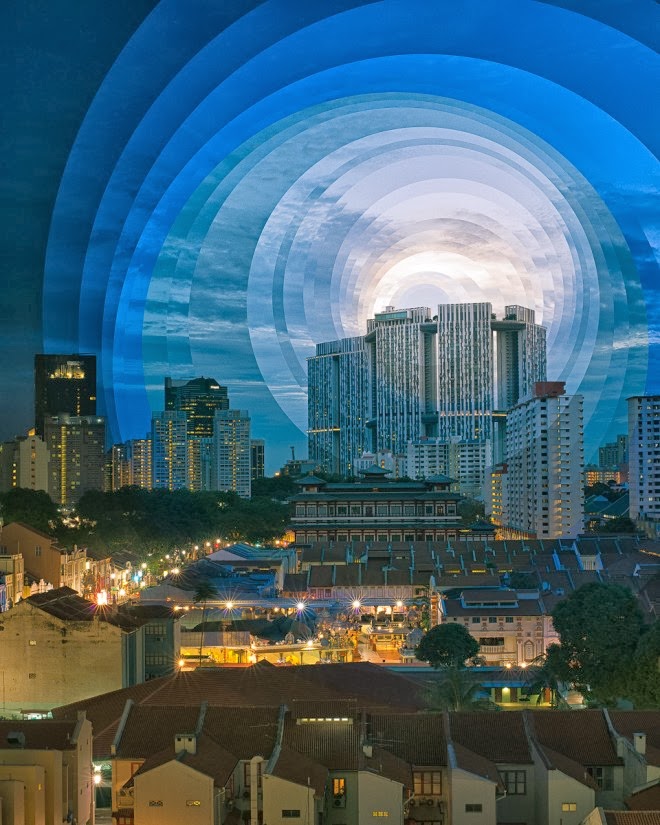A photograph allows the viewer to drink in the details of a frozen moment, but for anything longer than an instant one must resort to blurry streaks or switch to video (and rarely anything in between). Photographer Fong Qi Wei’s photo series Time Is a Dimension attempts to bridge this temporal gap by creating photos shattered into pieces that capture a larger passage of time.
“An experience may be richer if we stay rooted in a spot, even for a couple hours, and watch the change,” says Qi Wei. “As opposed to putting the camera to burst mode for five seconds, and then moving on to the next scenic destination.”
Each image in the series represents between two and four hours of time, often during sunrise or sunset, which give the brightest, most various and dynamic colors. Working alone, Qi Wei stakes out a location with his camera, sets it on a tripod (usually facing the hyper-urban vistas of Singapore, where he lives), and waits for interesting elements to cross the scene. An airplane passing in front of the sun or an itinerant boat floating along the water can punctuate the passage of time while the sky and scenery display a shifting palette of colors and contrasts.
After gathering nearly a hundred photos, Qi Wei is then faced with the iterative process of selecting and combining them into a single coherent picture. The resulting images are then turned into prints. “My workflow is entirely digital, from image capture to post processing and even print optimization. But my result is … analogue. My print is still my final intent,” he says.
It’s a fickle process, given how much time it takes to create each image and how many variables are involved — success is not guaranteed. Qi Wei still has incomplete works from months ago that haunt him. “It is kind of painful considering how much time I spent without getting a result I want.”
As the title of the series indicates, Qi Wei thinks of his work in terms of dimensions. A typical photographic print is a two-dimensional image that carries the third dimension of depth by the illusion of the camera’s focal length and the photographer’s composition. They help a viewer’s brain feel the space between the objects in the frozen scene. Qi Wei views his work as similarly injecting the fourth dimension of time.
“The best images are the ones which let you feel like you can step directly into the frame, into a world which is on the other side,” he says. “But the print is still an instance. Most paintings and photographs are an instance of time. That’s not the way the world works. We experience a sequence of time, and that’s why a video is somehow more compelling than a freeze frame.”
All photos: Fong Qi Wei











0 comments:
Post a Comment